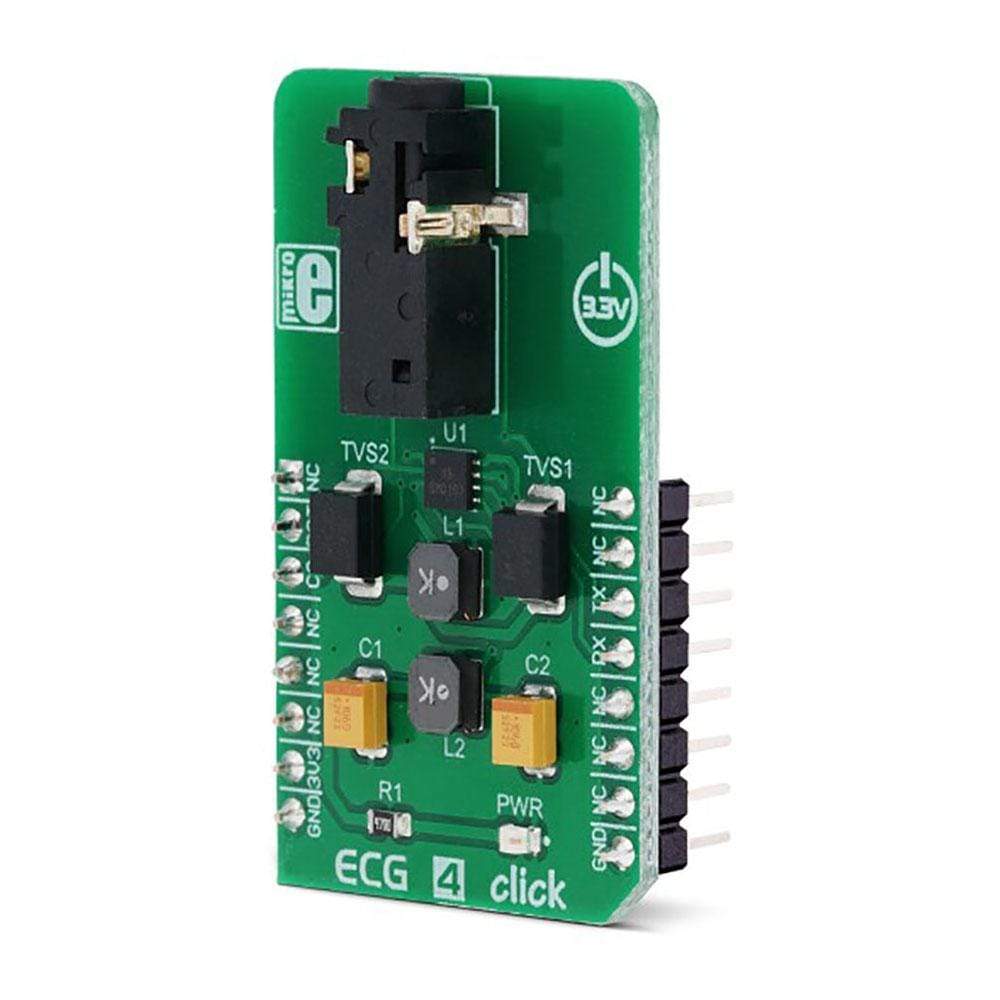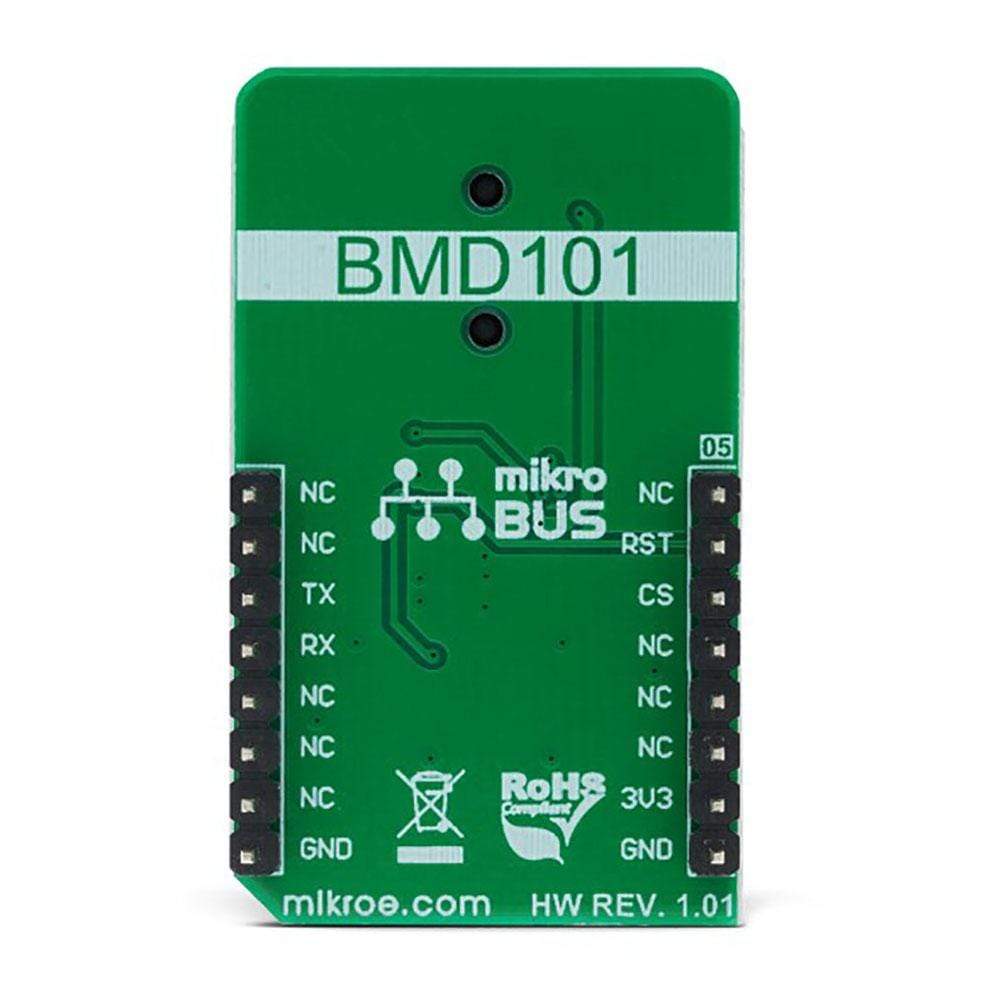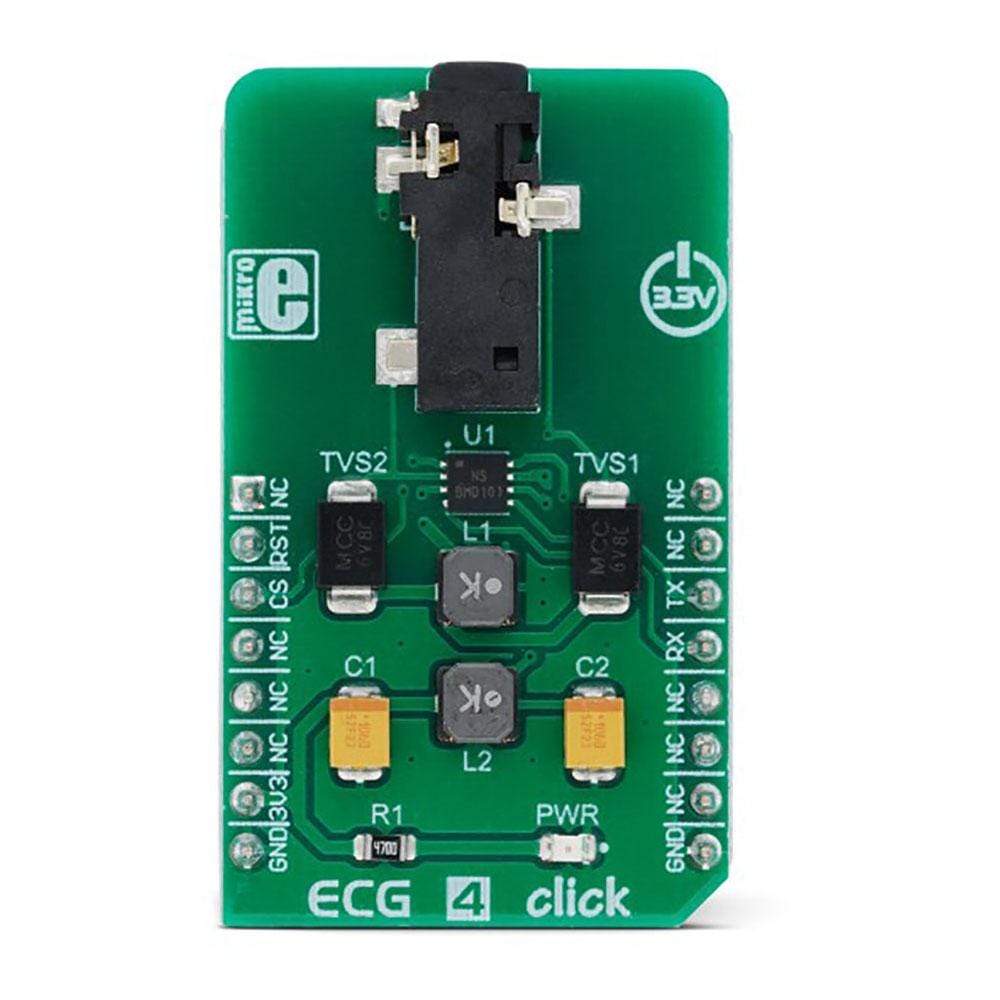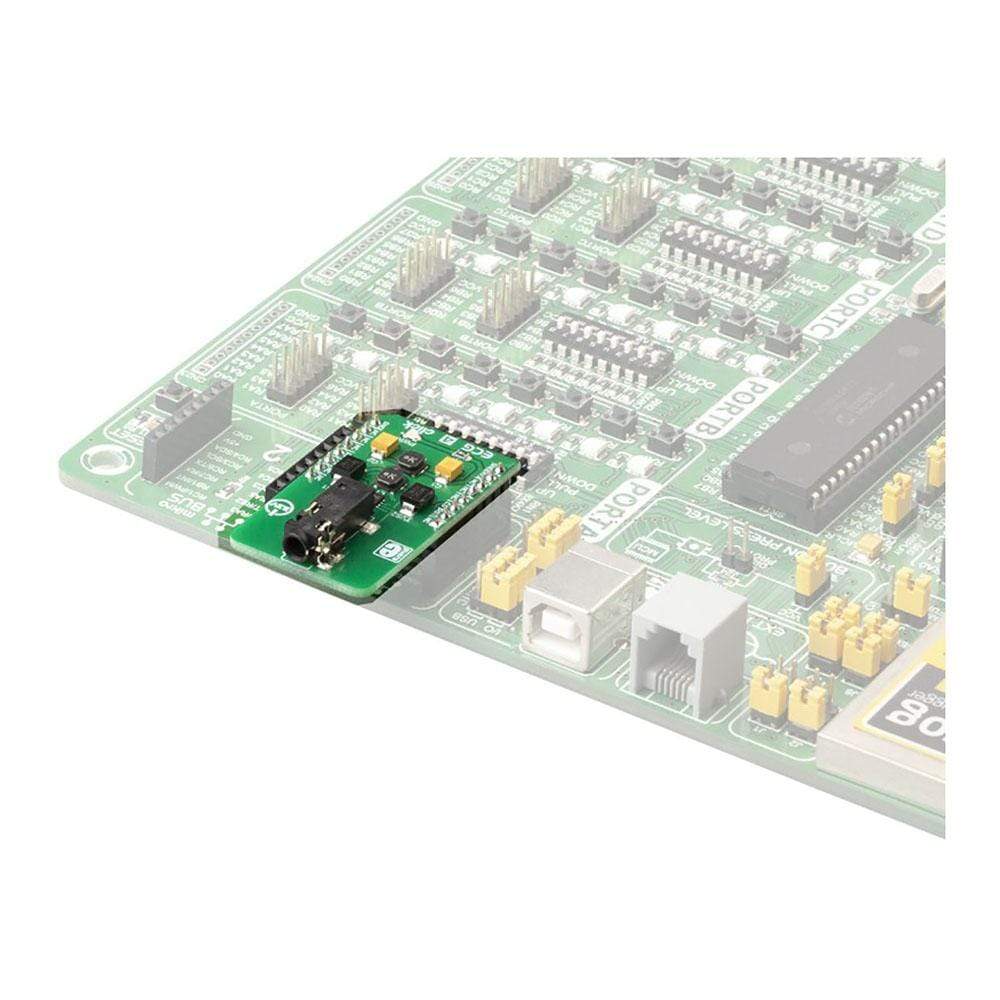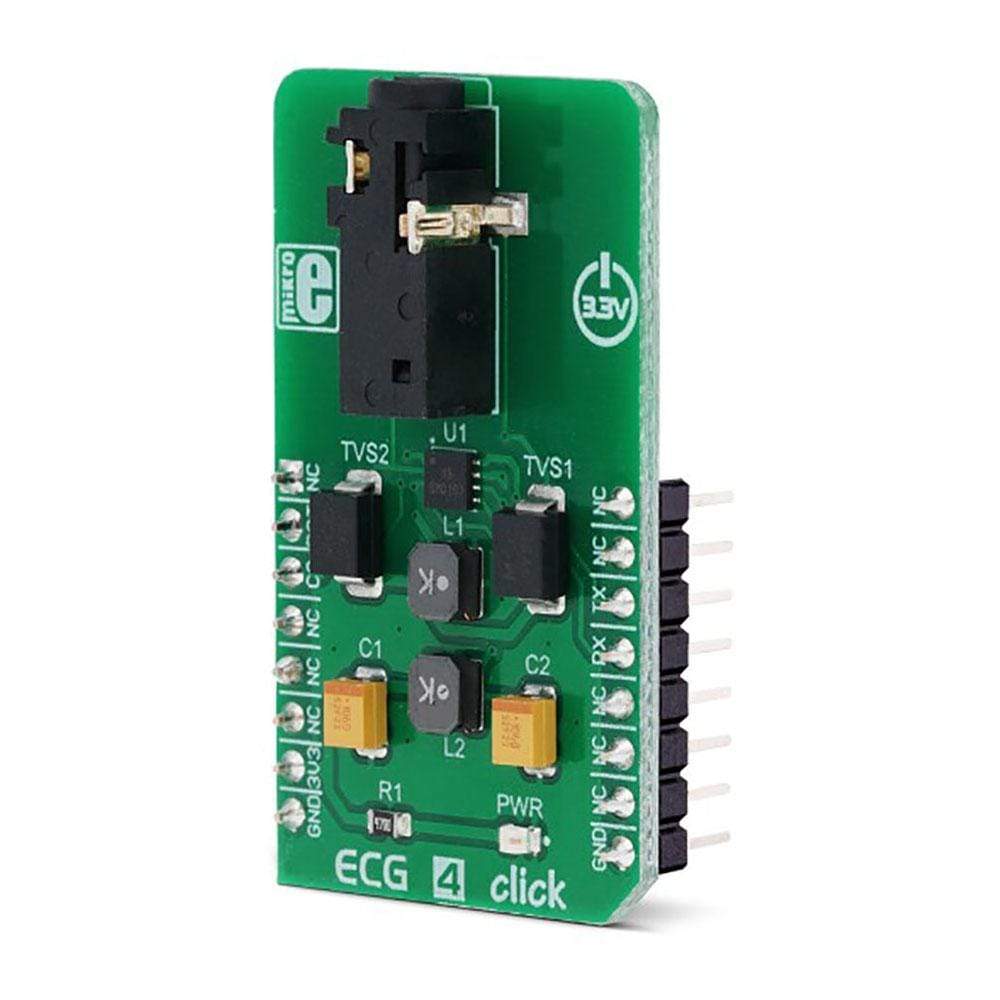
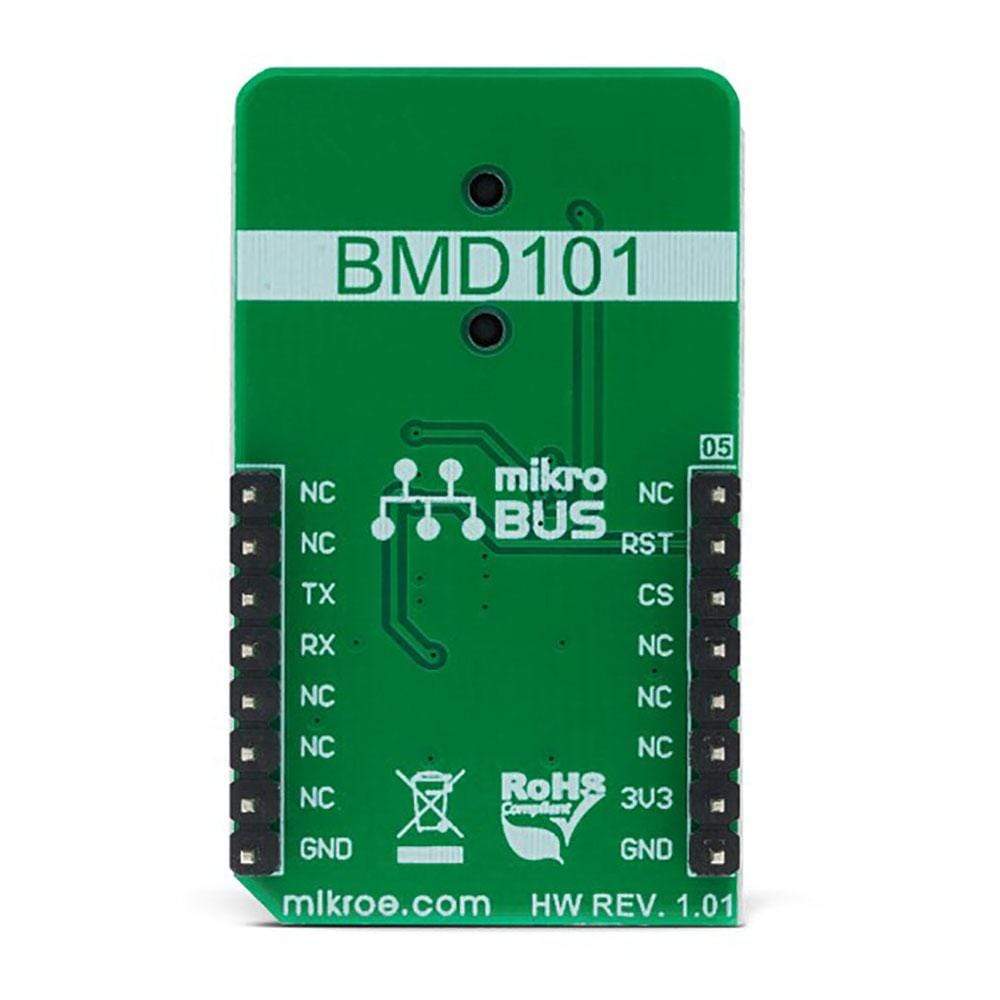
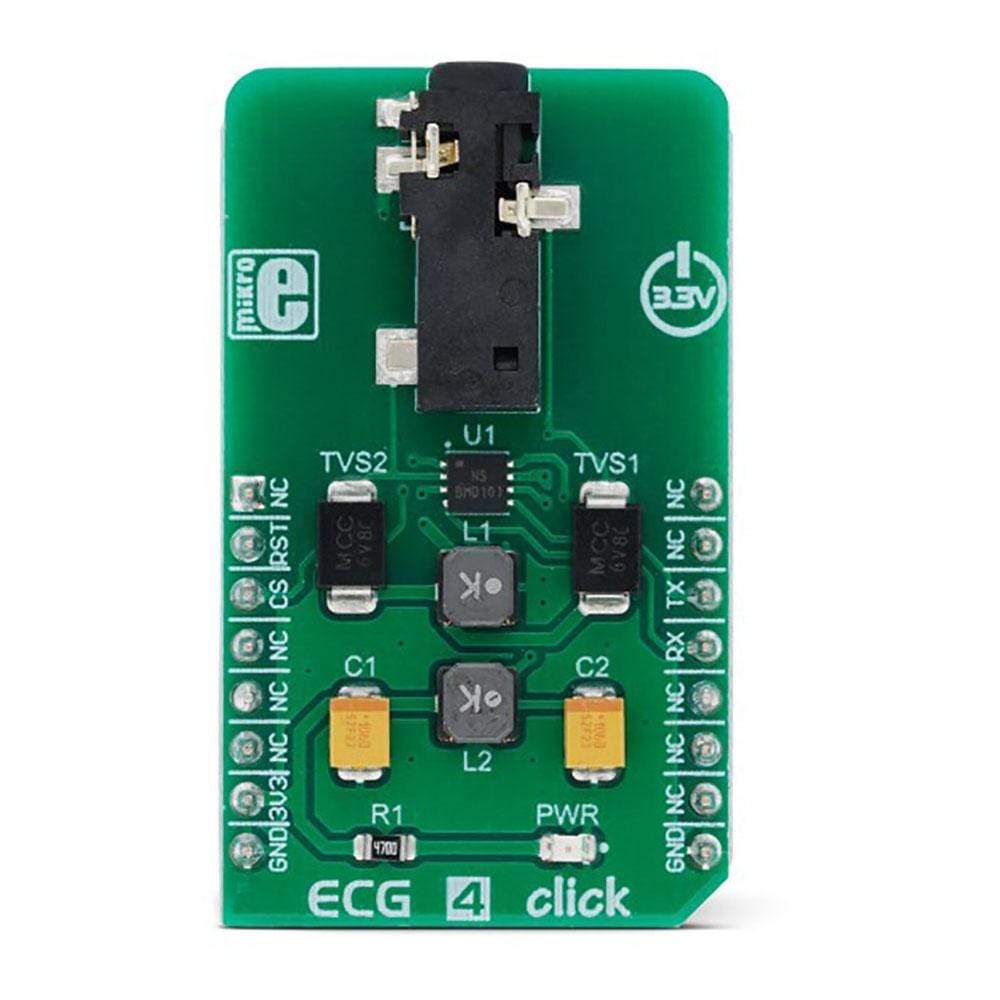
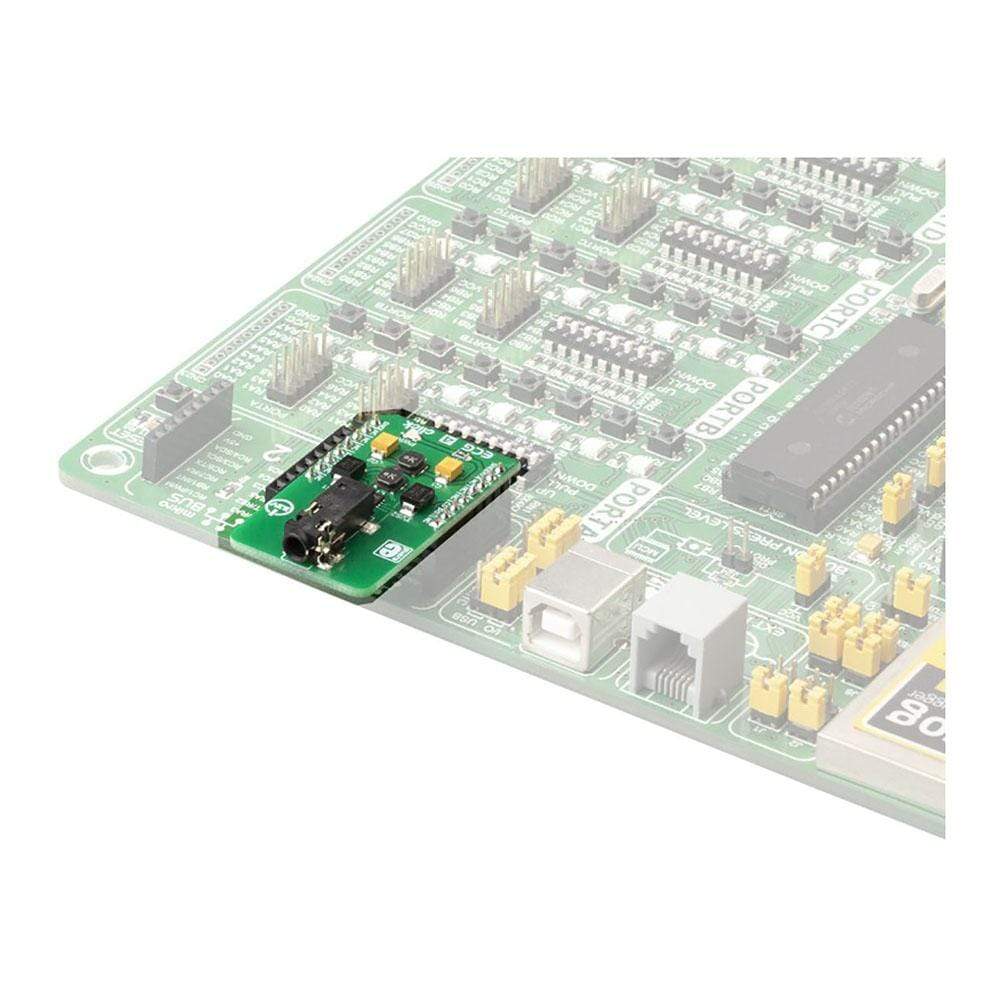
Overview
The ECG 4 Click Board™ is a complete solution for the development of ECG and Heart-Rate (HR) applications, based on the BMD101, a specialised bio-signal sensing System-on-Chip (SoC). The ECG 4 Click Board™ offers a reliable and accurate ECG and heart-rate monitoring, by sending processed bio-data over the UART interface. Its interface offers great flexibility and thus, very simple integration into any development environment. Besides the highly specialised bio-sensing SoC, the board is equipped with the 3.5mm electrodes connector, as well as with ESD protection diodes, making it ready to be used out of the box.
The ECG 4 Click Board™ is supported by a mikroSDK compliant library, which includes functions that simplify software development. This Click Board™ comes as a fully tested product, ready to be used on a system equipped with the mikroBUS socket.
Downloads
Das ECG 4 Click Board™ ist eine Komplettlösung für die Entwicklung von EKG- und Herzfrequenzanwendungen (HR) auf Basis des BMD101, einem spezialisierten System-on-Chip (SoC) zur Biosignalerfassung. Das ECG 4 Click Board™ bietet eine zuverlässige und genaue EKG- und Herzfrequenzüberwachung, indem verarbeitete Biodaten über die UART-Schnittstelle gesendet werden. Seine Schnittstelle bietet große Flexibilität und damit eine sehr einfache Integration in jede Entwicklungsumgebung. Neben dem hochspezialisierten Biosensor-SoC ist das Board mit einem 3,5-mm-Elektrodenanschluss sowie mit ESD-Schutzdioden ausgestattet, sodass es sofort einsatzbereit ist.
Das ECG 4 Click Board™ wird von einer mikroSDK-kompatiblen Bibliothek unterstützt, die Funktionen enthält, die die Softwareentwicklung vereinfachen. Dieses Click Board™ wird als vollständig getestetes Produkt geliefert und ist bereit für den Einsatz auf einem System, das mit der mikroBUS-Buchse ausgestattet ist.
| General Information | |
|---|---|
Part Number (SKU) |
MIKROE-3427
|
Manufacturer |
|
| Physical and Mechanical | |
Weight |
0.019 kg
|
| Other | |
Country of Origin |
|
HS Code Customs Tariff code
|
|
EAN |
8606018714810
|
Warranty |
|
Frequently Asked Questions
Have a Question?
Be the first to ask a question about this.

